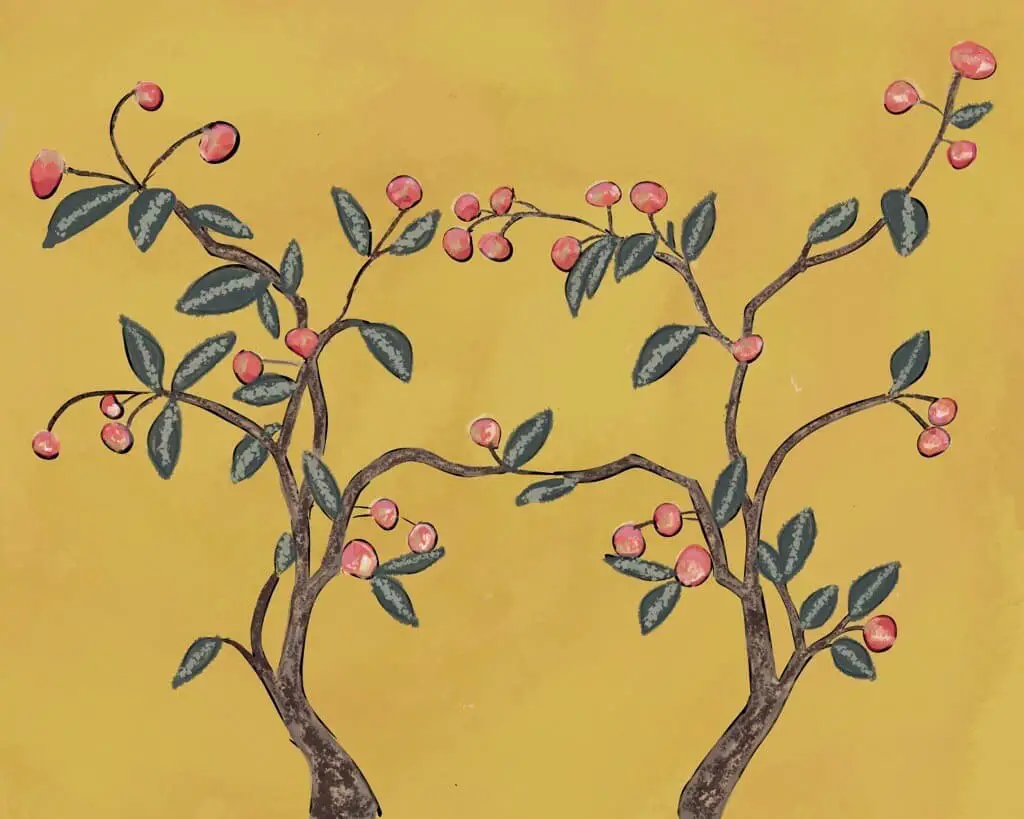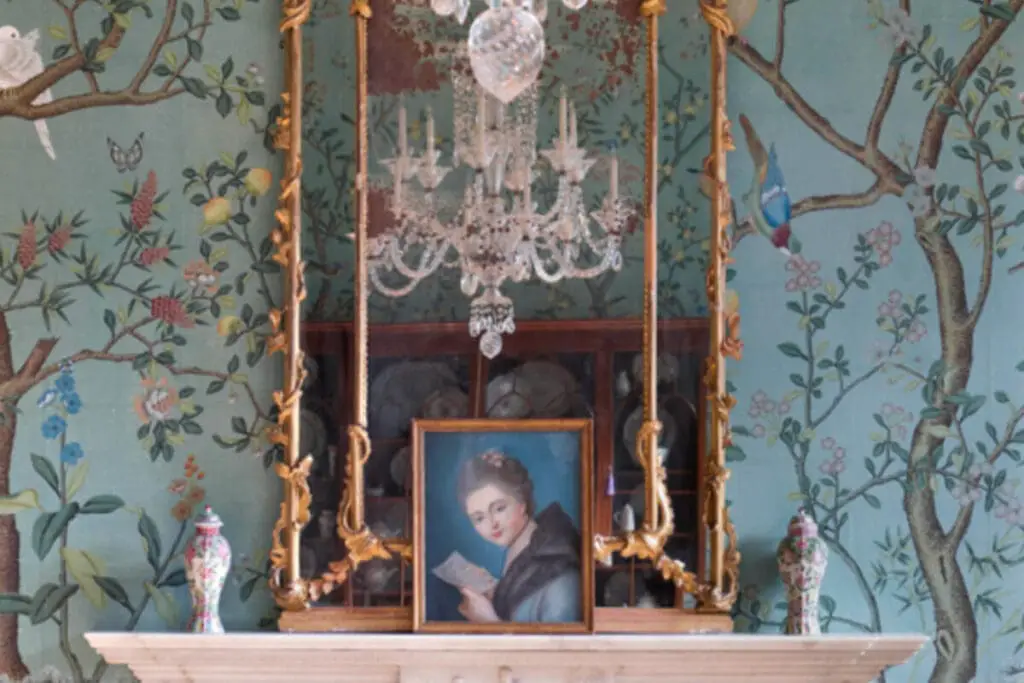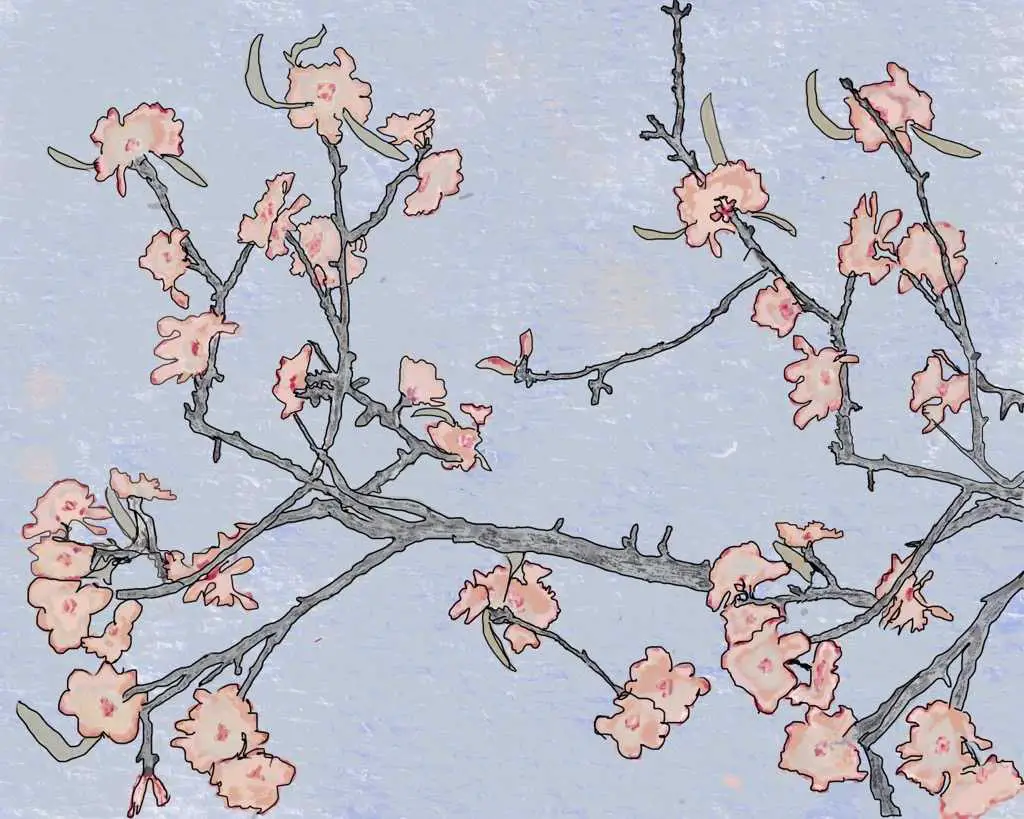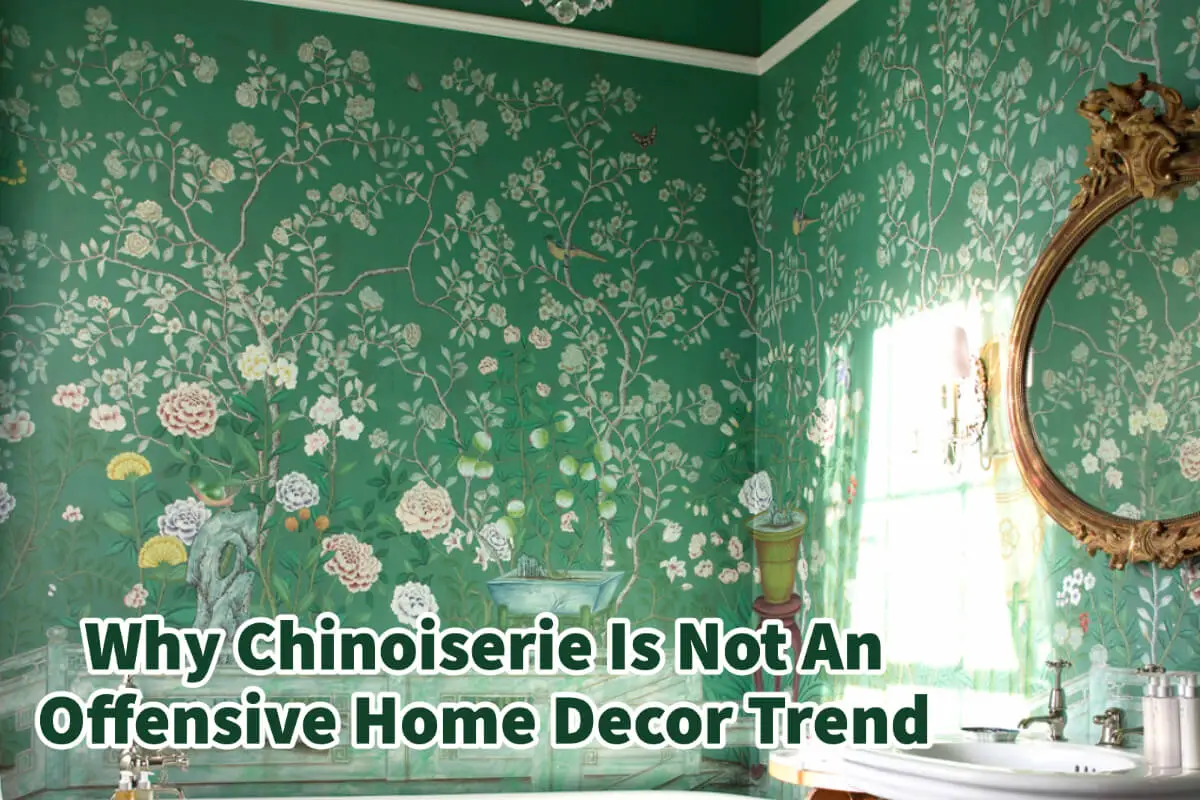In today’s world, many people are concerned with what is considered culturally appropriate. Chinoiserie is a home decor design look that many want to know if it is considered offensive or not.
Chinoiserie is not an offensive home decor look and trend. Chinoiserie merely alludes to a Chinese or Asian style but is an ancient European design trend; it was popular in 17th and 18th century Europe. Chinoiserie is a popular style that continues to impact home decor products and styles.
Table of Contents
- Why Chinoiserie Is Not An Offensive Home Decor Trend
- What Does Chinoiserie Mean?
- The Venetian Explore Marco Polo And Chinoiserie Art Style
- Chinoiserie And Its Effect On 17th-Century Home Decor Styles
- Related Content
Why Chinoiserie Is Not An Offensive Home Decor Trend
In the 17th and 18th Centuries, the world started to open up to trade between Europe and China. As many of these traders returned to their home countries, they brought artifacts, pottery, furniture, art, and other things they found on their journeys.
These 17th and 18th century Europeans became fascinated with China and Asia; they wanted an Asian look or home decor style. The Chinoiserie home decor trend originated from the European fascination with China and Asia.

Because of this fascination and respect for Asia, the Chinoiserie art and decor style rose to fame in Europe; Chinoiserie was built out of fame for the Asians and not due to dislike or the Europeans feeling the Asians were inferior.
In the 17th and 18th centuries, Europeans admired the many fine porcelains, silks, and paintings the Asians produced; they wanted this look and style in their home.
What Does Chinoiserie Mean?
Chinoiserie is a kind of art that uses Chinese qualities such as Chinese motifs and styles. The term itself is not offensive but is more about the style of Asian art.

Chinoiserie is the French term for “in the Chinese style.” The name is not derogatory but states that the home decor style is an Asian style or Asian look. This would be similar to stated a decor trend was Swedish, British, or French.
The Venetian Explore Marco Polo And Chinoiserie Art Style
There is perhaps no other explorer in history as Marco Polo, who affected China’s fascination with the West. Marco Polo traveled the Silk Road and brought elements of Western culture to the East, but more importantly, he started to bring Eastern culture back to the West.
Because of this Venetian exploration, Marco Polo was successful in his ability to bring things back to Europe from the east, and in particular, China. Marco Polo’s exploration gave the courage to other European explorers to follow his lead, go to China and other parts of Asia, and trade with these countries.
Marco Polo’s impact on the East and West trade was so profound that he ultimately impacted home decor design; he helped bring Chinese design into European art and design.
Chinoiserie And Its Effect On 17th-Century Home Decor Styles
Chinoiserie had a significant impact on European design. The earliest appearance of an important Chinoiserie-inspired interior was in 1670 to 1671 in the palace of the French King Louis XIV; today, these Chinoiserie artifacts no longer survive, but Louis XIV did have an impact on the Chinoiserie style.
Louis XIV and his famous Chinoiserie-inspired Chinese room interior caused the look for Chinoiserie to spread throughout Europe. Quickly, no respectable court residences could be seen without having a Chinese room or some Chinoiserie decor.
The concept of the Chinoiserie decor, or Chinese room, continued to spread throughout Europe. The impact on the home decor was profound.
Here are how Chinoiserie affected many of the home decor styles in 17th and 18th Century Europe and continues to inspire our design today:
Many Grand 17th Century Homes Had Chinoiserie Or A Chinese Room
In the 17th Century, In Europe, many of the grand homes of this era had Chinoiserie as part of their home decor. You would find an entire room dedicated to the Chinoiserie or Chinese style in many of these same homes.

The room would probably have Chinoiserie-painted wallpaper, Chinese furniture and artifacts, some embroidery items, and Chinese porcelains.
Chinoiserie Had an Impact On European Delftware
The Chinoiserie impacted the European blue and white or delftware production. Delftware, the porcelain makers, saw many delicate blue and white porcelains from China and wanted to implement that look and style in their design.
From Vienna, Austria, to England, pottery makers would produce ceramics and pottery with the Chinoiserie look and style.
Chinoiserie Had An Impact On Wallpaper
Perhaps nowhere has the Chinoiserie made an impression more lasting and critical than on wallpaper. Even today, you can purchase vintage wallpapers in the older chinoiserie styles.
Wallpaper or even having the artist painted directly on the walls was an essential aspect of the Chinoiserie look. It is also an area that remains a vital home decor look.
Chinoiserie Influenced The English Gardens
The Chinoiserie also influence the English Gardens. In England, gardens have begun to take on a new type of design. You could find it in the gardens, pagodas, pavilions, and other Asian design elements.
By the 19th Century, the Chinoiserie look was starting to disappear as many Europeans began to show fascination with other cultures such as Turkish, Egyptian, Gothic, and Greek. In the 1930s, we saw a revival of this look.
We believe the Chinoiserie trend will return as an essential home decor trend. We see it being used in a new way in many different types of home decor products.
Find out more about how Mondoro can help you create, develop, and manufacture excellent home decor and furniture products – don’t hesitate to contact me, Anita. Check out my email by clicking here, or become a part of our community and join our newsletter by clicking here.
Mondoro gives out a FREE Lookbook to anyone interested. You can receive a copy of our latest Lookbook by clicking here.
Listen to our Podcast called Global Trade Gal. You can find it on all major podcast platforms. Try out listening to one of our podcasts by clicking here.
Subscribe to our Mondoro Company Limited YouTube Channel with great videos and information by clicking here.
Related Content
Recycled And Eco-Friendly Woven Baskets, Japanese Shi Fu Paper Yarns
For centuries, the Japanese have used paper to spin and make yarns for clothes and other items. Today, companies build upon this ancient Japanese paper yarn technique to produce recycled and eco-friendly paper bamboo yarns. We can use these paper materials to weave products such as baskets and other items.
You can discover more by reading Recycled And Eco-Friendly Woven Baskets, And Japanese Shi Fu Paper Yarns by clicking here.
What Fabric Is More Expensive: Silk, Polyester, Or Viscose?
Silk is the most expensive fabric between silk, polyester, and viscose because of how silk is produced. Producing silk fiber is highly labor-intensive. Viscose is more costly than polyester but is cheaper than silk. Polyester is the cheapest but is also a synthetic fiber widely used worldwide.
To learn more about What Fabric Is More Expensive: Silk, Polyester, Or Viscose? by clicking this link.
What Is Hawaiian Home Decor?
The traditional Hawaiian house is known as a Hale. The Hawaiian Hale was made from logs, grass-thatched roofs, and mosaic stone floors. To have all the elements of the traditional Hawaiian home in your home, you should have home decor products from natural materials, the ocean, and stones.
You can discover more by reading What Is Hawaiian Home Decor? by clicking here.


